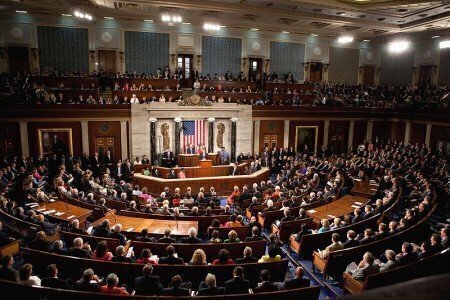Can a group of states ban together for the first time since 1787 to change the Constitution at a convention? It all comes down to a matter of math and a few important numbers: 5, 27, 34, 38, 535 and 9.
 The current debate is about a movement to call a convention of states to propose a balanced budget amendment, instead of leaving that task to Congress.
The current debate is about a movement to call a convention of states to propose a balanced budget amendment, instead of leaving that task to Congress.
Article V of our Constitution lays out two ways to amend the current document. One way has been used 17 times since the 10 amendments in the Bill of Rights were ratified in 1791. So far, these 27 amendments have originated in Congress and been sent to the states for approval. Once three-quarters of the individual states ratify an amendment, it becomes the law.
The second method has never been used. It involves petitions from at least 34 states to call a constitutional convention, where one or several amendments are proposed. The amendment or amendments are then sent on to the states, where 38 states are needed for ratification.
If you are really interested in big questions involving constitutional conventions, there is an excellent overview available from Thomas Neale at the Congressional Research Service. It discusses the background of the Article V process and some current movements underway to bring some issues to national prominence using Article V.
Currently, the Balanced Budget Amendment Task Force, a group that tracks petitions, says there are 27 active petitions on this issue that have been filed with Congress. The group is targeting 13 additional states, hoping to get seven states to approve balanced budget resolutions. That magic number of 34 would force the 535 members of Congress to act.
Among these 13 states - Maine, West Virginia, Virginia, Kentucky, South Carolina, Oklahoma, Minnesota, Wisconsin, Arizona, Wyoming, Montana, Washington and Idaho - 10 currently are controlled by the Republicans, according to the National Council of State Legislatures. So in theory, balanced budget proponents need to get seven of the 10 GOP-led states on board with passing amendment petitions.
But that is where the complications begin, once there is a widely recognized claim that two-thirds of the states have asked for a constitutional convention. For starters, some states could rescind their amendment applications as the quorum number gets closer to 34 states. Maryland is a Democrat-controlled state that has an active Balanced Budget petition, for example. And then are big questions about how the 535 members of Congress would handle the convention process.
“The Article V Convention presents many questions that Congress would be called on to consider, and perhaps answer, in the event a convention became a serious possibility. If so, Congress would not be without resources,” said Neale from the CRS back in April 2014.
One immediate problem would be how Congress would acknowledge of the acceptance of the petitions as meeting the Article V requirement. Critics have pointed out that not all of the petitions have the same wording. Another issue would be the type of conventions called by Congress for the nomination and then ratification of an amendment or amendments.
Despite trying 22 times between 1973 and 1992, Congress wasn’t able to approve legislative rules for a constitutional convention process. In the scenario of a balanced-budget amendment convention, Congress would need to establish who can attend the convention to finalize the wording of a single amendment – or if such a convention can propose multiple amendments.
Then Congress would need to determine if state legislatures would ratify the new amendments or if an ad-hoc conventions of state residents would ratify the proposed amendments.
There are deep political and legal disagreements about these concepts, as well as the proper role of Congress in determining convention rules, so the issues could come down to number 9 – as in the nine Justices of the Supreme Court.
But in one past case where the constitutional convention quorum was almost met, Congress settled the issue in 1912 by passing an amendment that would have been proposed by a national convention anyway.
The 17th Amendment was a direct action taken by Congress after states became concerned that the United States Senate appointment process was compromised or tainted. The amendment allowed for the direct election of Senators, and headed off a likely Article V convention.







